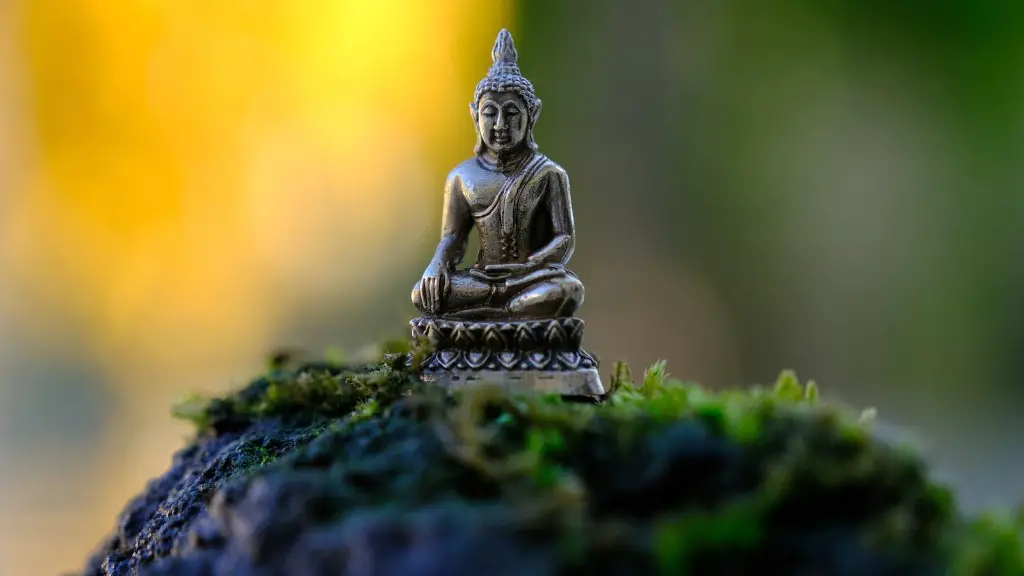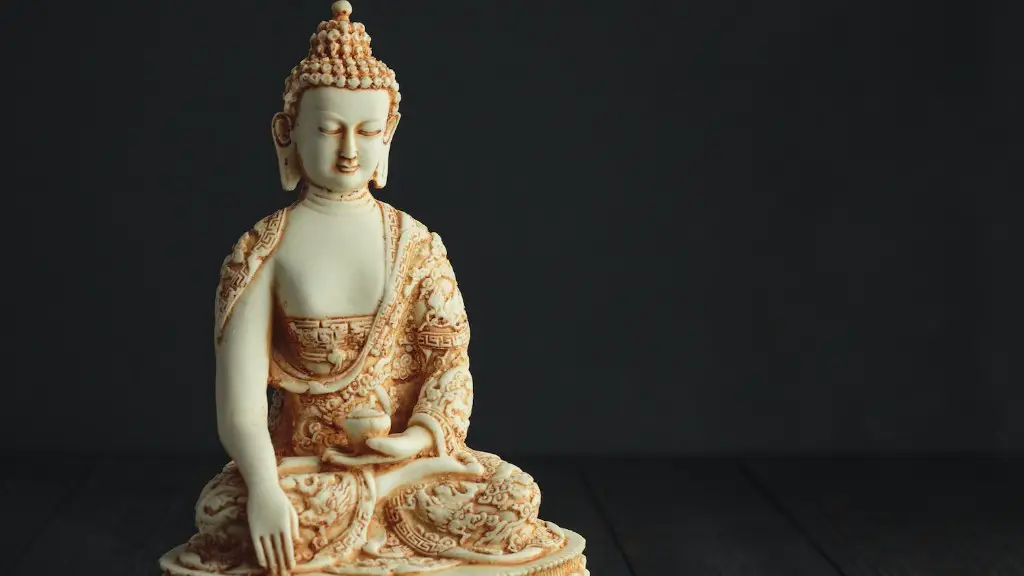Buddhism was founded in the 5th century BCE by Siddhartha Gautama. Siddhartha Gautama was born into a wealthy family in Kapilvastu, Nepal. When he was 29 years old, he left his home and family to search for truth. After six years of study and meditation, he achieved enlightenment and became the Buddha. The Buddha taught that the way to end suffering is to remove the desires that cause suffering. This can be accomplished by following the Noble Eightfold Path.
There are three main foundations of Buddhism: the Four Noble Truths, the Eightfold Path, and the Triple Gem. The Four Noble Truths state that suffering is an inherent part of life, that the cause of suffering is attachment, that suffering can be ended, and that the Eightfold Path is the way to end suffering. The Eightfold Path is a framework for ethical and moral living that includes right understanding, right thought, right speech, right action, right livelihood, right effort, right mindfulness, and right concentration. The Triple Gem is the Buddha (the enlightened one), the Dharma (the teachings), and the Sangha (the community).
What are the main foundations of Buddhism?
Buddhism is a religion that originated in India over 2,500 years ago. It is one of the world’s largest religions, with over 500 million followers worldwide. Buddhists believe that life is a cycle of suffering, and that the only way to escape this cycle is through enlightenment. This can be achieved through meditation, physical and spiritual labor, and good deeds.
Buddhism is a religion that is based on the teachings of Siddhartha Gautama. The main principles of this belief system are karma, rebirth, and impermanence. Buddhism teaches that our actions have consequences, both good and bad, and that these consequences will determine our future lives. This belief is called karma. Buddhism also teaches that we are reborn into different forms after we die, and that this cycle of birth and death is called samsara. However, it is possible to break out of this cycle through the attainment of nirvana, or liberation from suffering. Finally, Buddhism teaches that everything is impermanent, and that this is the source of much of our suffering.
What are 5 basic beliefs of Buddhism
The Five Precepts are guidelines for living a moral and ethical life. They are:
1. Refrain from taking life
2. Refrain from taking what is not given
3. Refrain from the misuse of the senses
4. Refrain from wrong speech
5. Refrain from intoxicants that cloud the mind.
Buddhism is a religion that encourages its followers to avoid both self-indulgence and self-denial. The Four Noble Truths, which are the foundation of the religion, teach that all life is suffering, that suffering is caused by desire, that suffering can be ended by eliminating desire, and that there is a path to the elimination of desire. Buddhists also believe in karma, the law of cause and effect, and reincarnation, the continuous cycle of rebirth.
What are the core values of Buddhism?
Buddhists believe that people should try to end suffering; all things should be seen as having no self or essential nature. The main Buddhist values are love, wisdom, goodness, calmness and self-control. Buddhists aim to live in a way that minimises suffering and to help others do the same.
The Seven Factors of Awakening are important principles in Buddhism that can help to guide one on the path to enlightenment. They are: mindfulness, investigation of the nature of reality, energy, joy, relaxation, concentration, and equanimity. By cultivating these factors, one can develop greater clarity of mind and a deeper understanding of the true nature of reality.
What is the ultimate goal of Buddhism?
The ultimate goal of the Buddhist path is to achieve nirvana, an enlightened state in which the fires of greed, hatred, and ignorance have been quenched. To achieve this goal is to attain release from the round of phenomenal existence with its inherent suffering.
The Four Noble Truths are the cornerstone of Buddhist teaching. They are the foundation upon which the entire edifice of the Dharma is built. The first truth, that of suffering (Pali: dukkha; Sanskrit: duhkha), is characteristic of existence in the realm of rebirth, called samsara (literally “wandering”). This truth is often referred to as the truth of suffering, or the truth of theOrigination of Suffering (Pali: samudaya-sacca; Sanskrit: samudaya-satya). It is the first of the Four Noble Truths because it is the foundation of the entire Buddhist path. The second truth is that of the origin of suffering, which is attachment (Pali: tanha; Sanskrit: trishna). This truth is often referred to as the truth of the Cause of Suffering (Pali: samudaya-sacca; Sanskrit: samudaya-satya). The third truth is that of the cessation of suffering, which is nirvana (Pali: nibbana; Sanskrit: nirvana). This truth is often referred to as the truth of the Cessation of Suffering (Pali: nirodha
What are the 8 rule of Buddhism
The Eight Precepts are basically a set of guidelines to help with living a more peaceful and harmonious life. Abstaining from killing and stealing are pretty self-explanatory, but abstaining from sexual activity can mean different things to different people. For some, it may mean celibacy, while for others it may mean refraining from any sexual activity outside of a committed relationship. And finally, abstaining from telling lies is about being honest with yourself and others.
The six are (1) generosity (dāna), (2) morality (śīla), (3) patience (kṣānti), (4) vigor (vīrya), (5) concentration (dhyāna), and (6) wisdom (prajñā). All of these are important in their own way, but wisdom is considered the most important.
What are the 4 foundations of mindfulness in Buddhism?
The four domains of mindfulness refer to the four main ways in which mindfulness can be established, according to the early Buddhist texts. These four domains are: mindfulness of the body, mindfulness of feelings, mindfulness of the mind, and mindfulness of dhammas.
Buddhism teaches that karma, or the law of cause and effect, determines one’s destiny. Good deeds lead to a good rebirth, while bad deeds lead to a bad rebirth. The cycle of birth and death, or rebirth, is called samsara. The goal of Buddhism is to escape from samsara and attain nirvana, or liberation from suffering.
The Four Noble Truths are the foundation of Buddhist thought. They are: (1) the truth of suffering; (2) the truth of the cause of suffering; (3) the truth of the end of suffering; and (4) the truth of the path to the end of suffering.
The Eightfold Path is the fourth Noble Truth. It is the way to end suffering. The Eightfold Path includes right understanding, right thought, right speech, right action, right livelihood, right effort, right mindfulness, and right concentration.
What is the moral code of Buddhism
Ethical behavior both leads to and flows from an enlightened mind. In other words, if we want to be ethical, we need to be aware of the consequences of our actions. And if we want to be enlightened, we need to be ethical.
The Buddha’s teachings on the Five Precepts offer guidance on how to live an ethical life. The precepts advise us to abstain from harming living beings, taking things that are not freely given, engaging in sexual misconduct, speaking falsely, and taking intoxicating drinks and drugs.
Living in accordance with the Five Precepts leads to a life of greater happiness and less suffering. It is also a prerequisite for spiritual development.
It is important to abstain from taking life because it is not our place to do so. Life is precious and should be respected. Taking life is a decision that should only be made by someone in a position of authority and responsibility, and not by anyone else.
What are the 10 rules of Buddhism?
The Ten Grave Precepts are a set of ethical guidelines for life. They are:
1. Respect life – Do not kill
2. Be giving – Do not steal
3. Honor the body – Do not misuse sexuality
4. Manifest truth – Do not lie
5. Proceed clearly – Do not cloud the mind
6. See the perfection – Do not speak of others’ errors and faults
7. Realize self and others as one – Do not elevate the self and blame others
The Middle Way is the Buddhist way of life; a self-development progression through the Noble Eight-fold Path which comprises Right Understanding, Right Thought, Right Speech, Right Action, Right Livelihood, Right Effort, Right Mindfulness and Right Concentration.
The main idea of the Middle Way is to find a balance in life between extremes. For example, it is common to find people who are so caught up in their work that they neglect their health, or people who focus so much on pleasurable activities that they neglect their responsibilities. The Middle Way suggests that the key to a happy and fulfilling life is to find a balance between these extremes.
The Eight-fold Path is a guide on how to find this balance in life. It helps us to understand the true nature of things, to think clearly and objectively, to speak and act in ways that are helpful and not harmful, to take up a livelihood that is ethical and helpful to others, to make an effort to improve oneself and one’s surroundings, to develop mindfulness and concentration, so that we can live more peacefully and happily.
Final Words
There are four main foundations of Buddhism: the Four Noble Truths, the Noble Eightfold Path, karma, and rebirth.
Buddhism has many different foundations, but the most important are the Four Noble Truths and the Eightfold Path. The Four Noble Truths state that suffering is an inherent part of life, that there is a cause of suffering, that there is an end to suffering, and that there is a path to liberation from suffering. The Eightfold Path is a set of guidelines for how to live a moral and ethical life in order to end suffering.




